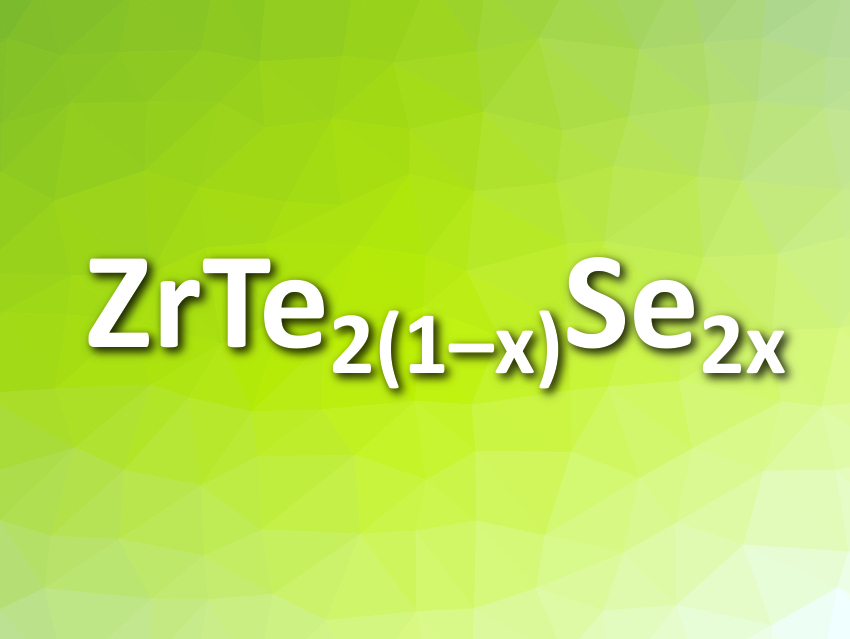Transition-metal dichalcogenides (TMDCs) can form a large number of two-dimensional layered materials. Many different elemental compositions are possible, leading to structures that can be metallic, metastable metallic, semimetallic, or semiconducting in nature. The ability to tune and manipulate the structures and properties of different TMDCs is important to allow their use in different electronic devices.
Li Song, University of Science and Technology of China, Hefei, Zhe Sun, University of Science and Technology of China and CAS Center for Excellence in Superconducting Electronics (CENSE), Shanghai, China, and colleagues have changed the properties of 2D zirconium ditelluride (ZrTe2) sheets from a semimetal to a semiconductor by substituting some of the telluride ions with selenium ions. The researchers made ZrTe2 and ZrTe2(1-x)Se2x (0 ≤ x ≤ 1) single crystals using chemical vapor transport (CVT). They started from the powdered elements and used iodine as a transport agent. The degree of selenium substitution was tuned by changing the temperatures of the reaction and growth zones in the reaction chamber.
The properties of the resulting materials were investigated using single-crystal X-ray diffraction (XRD), angle-resolved photoemission spectroscopy (ARPES), and density functional theory (DFT) calculations. Increasing the number of selenium ions in the material causes the 2D sheets to change from semimetals to semiconductors. The team attributes this to substituted Se atoms on Te sites that affect the band structure of ZrTe2. The substitution causes a decrease in the valence band splitting in the doped material. An indirect bandgap opens with the increase in selenium concentration.
- Transition from Semimetal to Semiconductor in ZrTe2 Induced by Se Substitution,
Zahir Muhammad, Bo Zhang, Haifeng Lv, Huan Shan, Zia ur Rehman, Shuangming Chen, Zhe Sun, Xiaojun Wu, Aidi Zhao, Li Song,
ACS Nano 2019.
https://doi.org/10.1021/acsnano.9b07931




